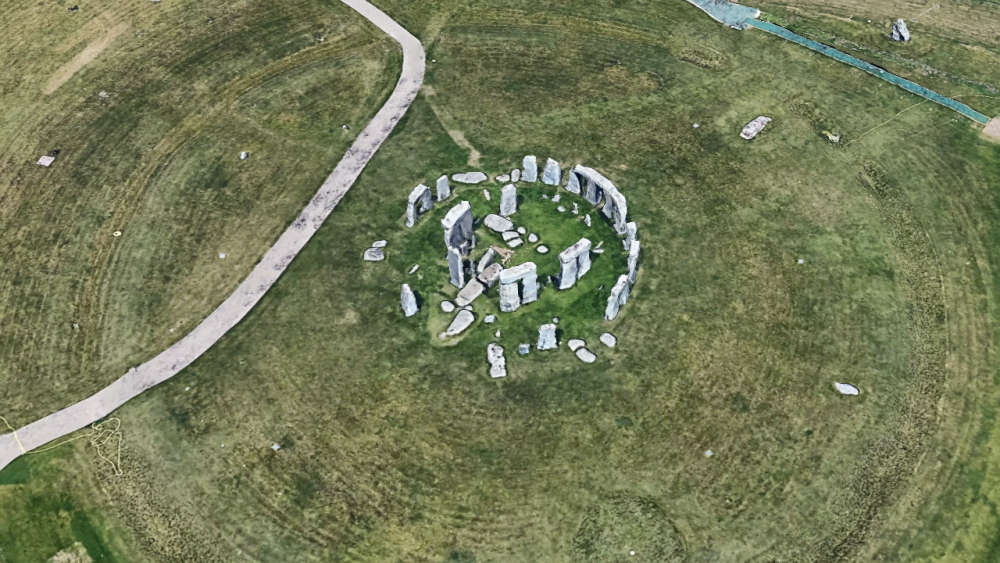
A new study has found that the big Altar Stone in the middle of Stonehenge came from the far north of Scotland, not from southwest Wales as people once thought.
This discovery shows that building Stonehenge was a bigger team effort than scientists realized before. It also means that stones used to build Stonehenge came from different parts of Great Britain, making it a special monument.
The study suggests that people living in Britain a long, long time ago were more connected and advanced than we previously thought. The distance between Stonehenge and the far north of Scotland is about 700 kilometers (434 miles).
The research was led by Anthony Clarke, a young Welsh scientist now working in Australia. The discovery is so important that it was published in Nature, one of the world’s top science magazines.
But Anthony, born in Pembrokeshire, Wales, joked that people back home might be disappointed since they thought the Altar Stone came from their area. He said, “I don’t think I’ll be forgiven by people back home!” But he also reminded everyone that some other stones at Stonehenge still come from Wales, and the larger ones come from England.
Anthony added with a smile, “We’ve got to give the Scots something!” But on a serious note, he explained that Stonehenge seems to have been a great project that involved people from all over Britain.
In 1923, a Welsh scientist found that some stones at Stonehenge came from the Preseli hills in Wales. But the Altar Stone was made of a different rock, and 20 years ago, scientists started to wonder if it really came from Wales. Last year, a group of researchers discovered that the Altar Stone couldn’t have come from Wales, but they didn’t know where it was from—until now.
Professor Nick Pearce, who helped with the new discovery, said it was a big surprise to find out that the Altar Stone came from northeast Scotland, more than 700 kilometres away. He said the people who lived back then must have been very well connected and organized to transport such a big stone from so far away.
The team at Curtin University figured this out by studying pieces of the Altar Stone that had fallen off over time. They compared the stone’s makeup to a database of rocks from all over the world and found that it matched rocks from the Orcadian Basin in northeast Scotland.
Building Stonehenge started 5,000 years ago, with changes and additions made over the next 2,000 years. Most of the bluestones were the first to be put up at the site.
Dr. Robert Ixer, another scientist who worked on the study, called the findings "shocking." He wondered how and why the people of that time moved such a huge stone all the way from Scotland to Stonehenge.
This discovery shows just how connected and clever people were back in those ancient times. Archaeologists who study Stonehenge are excited to learn more about how these ancient people lived and worked together. Heather Sebire, a senior curator who looks after Stonehenge, said that it’s amazing that people brought such a large stone all that way and that they must have had a very important reason to do so. She believes that these people probably had a spiritual side, just like we do today.

 Cafe and GoSkydive ready to return after airfield fire
Cafe and GoSkydive ready to return after airfield fire
 Winterslow woman to take on Walk for Wards challenge after breast cancer diagnosis
Winterslow woman to take on Walk for Wards challenge after breast cancer diagnosis
 It all comes down to the final match for Salisbury FC
It all comes down to the final match for Salisbury FC
 Pair charged with shoplifting offences in Salisbury
Pair charged with shoplifting offences in Salisbury
 Crimestoppers call on us to help prevent burglary, robbery and theft
Crimestoppers call on us to help prevent burglary, robbery and theft
 Can Salisbury stay up - all the scenarios explained
Can Salisbury stay up - all the scenarios explained
 Scam warning over discounted Salisbury Reds travel offer
Scam warning over discounted Salisbury Reds travel offer
 Father set for London Marathon challenge in aid of the Stars Appeal after sons were cared for on the Neonatal Unit
Father set for London Marathon challenge in aid of the Stars Appeal after sons were cared for on the Neonatal Unit








